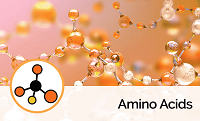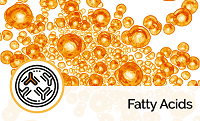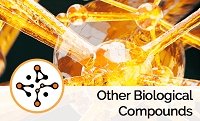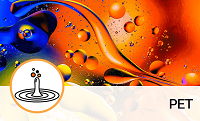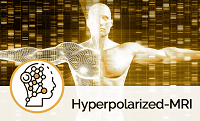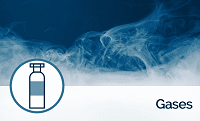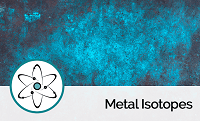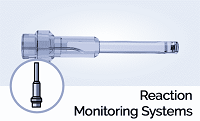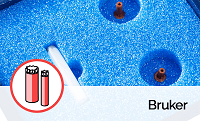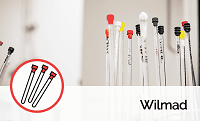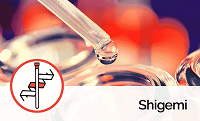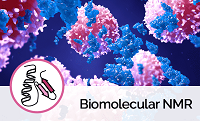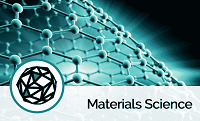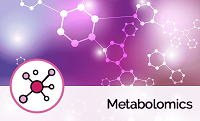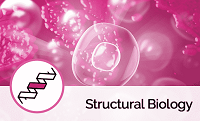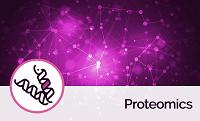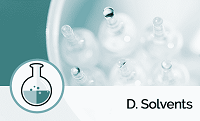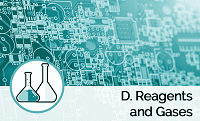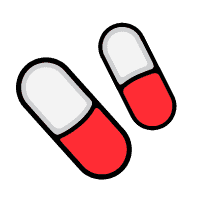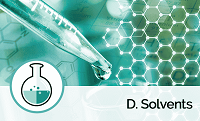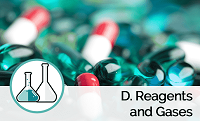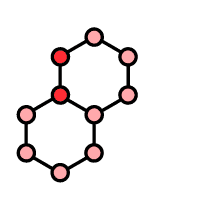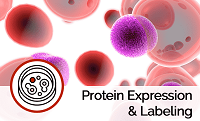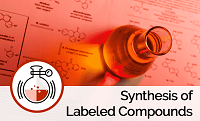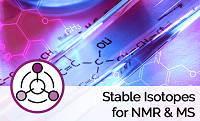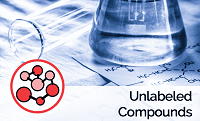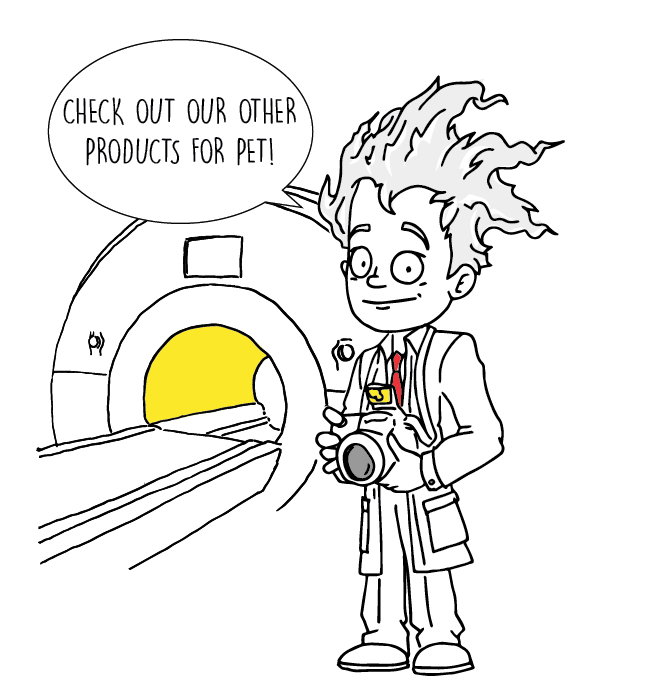Even though 18F-fluorodeoxyglucose (FDG) is the main radiopharmaceutical used in Positron Emission Tomography (PET) imaging technology, Fluorine-18 is not the only radioactive atom used to observe metabolic processes in the body. In fact, radioactive Copper-64 (half-life = 12.7 hours) is also a great alternative as it emits both β+ (positrons) – like 18F-FDG – and β- (electrons) radiations – which can be used for therapeutic purposes.
High isotopic purity of Nickel-64 allows for maximum-yield production of Copper-64. Nickel-64 is placed on a gold or rhodium platform in a cyclotron (11-19 MeV). It is converted into radioactive Copper-64 through proton irradiation. 64Cu is then treated and purified before being incorporated into molecules.
64Cu-labeled radiopharmaceuticals can have both diagnostic and therapeutic purposes.
On the one hand, when coupled with methylthiosemicarbazone (ATSM) molecules, 64Cu-ATSM targets hypoxic tissues. In hypoxic conditions, copper is then trapped by intracellular chaperone proteins and accumulate in the tumoral cells. The β+ radiations generated by 64Cu degradation are then captured thanks to a PET camera.
On the other hand, 64CuCI2 is used to directly target cancer cells which highly accumulate Cu via the Cu transporter 1 (Ctr1). Once inside the cell, Copper-64 generates radiations which are cytotoxic for the infected cells, and eventually destroys them.


Cortec Health is pleased to provide highly enriched (>99%) Nickel-64 metal powder which contains only trace impurities:
- Cu impurities < 10 ppm
- Ni impurities: < 0.13% 58Ni, < 0.07% 60Ni, < 0.01% 61Ni, < 0,47% 62Ni.


